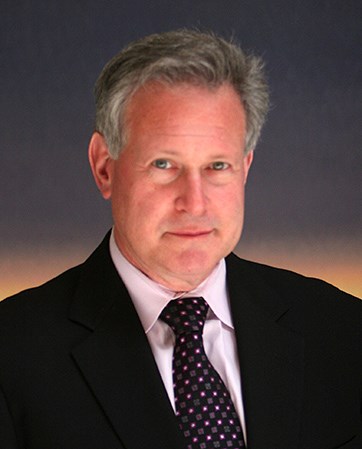Speakers By Topic

Speakers By Type




The Hacking of the American Mind
What is the difference between pleasure and happiness? Pleasure is short-lived, happiness is long-lived. Pleasure is visceral, happiness is ethereal. Pleasure is usually experienced alone, happiness is often experienced in social groups. Pleasure is achievable with substances, happiness cannot be achieved with substances. Pleasure is taking, happiness is giving. And pleasure is dopamine while happiness is serotonin. Why should we care? Because dopamine down-regulates its own receptor. Get a hit, get a rush, and the receptors go down. Next time you need more, and more. Anything that generates pleasure can also lead to addiction. Conversely, serotonin does not down-regulate its own receptor, so you can’t overdose on too much happiness. But there is one thing that does down-regulate serotonin: dopamine. So the more pleasure we seek, the less happy we get. Wall Street, Madison Avenue, Las Vegas, Silicon Valley, and Washington DC have conflated pleasure with happiness so that we don’t know the difference. In the process society has become fat, sick, stupid, and broke. The only way to reverse this is by understanding the science of these two ostensibly “positive” emotions, how they interact, and how to modulate them. Because those who abdicate happiness for pleasure will end up with neither.
Happiness, Longevity, and Disease
Do happy people live longer? Indeed they do, but it’s not because they are happy. It’s because they engage in fewer reward-seeking behaviors that shorten their lives. Reward drives consumption of substances like alcohol and sugar, which reduce life-span, and stress drives cortisol, which drives further consumption of substances. Thus stress and reward lead to an unremitting “vicious cycle”, which shortens life. Understanding these behaviors and the biochemistry behind them is necessary to increase both happiness and longevity.
Corporate Wealth or Public Health?
Until the 1970’s there was a relatively even balance between individual rights and corporate rights. However, the past 45 years has seen the rise of the Corporate Consumption Complex, and in turn, the loss of individual rights. Understanding the history and politics, and the role of specific corporate and government actors is necessary to comprehend what has amounted to a seismic upheaval of the U.S. Constitution. In the process, America has become fat, sick, stupid, and broke.
The Death Spiral
The “death spiral” is a doubles figure skating maneuver in which the larger skater pivots on one toe while holding the hand of the smaller skater, who whirls about in a supine position as the head reaches closer and closer to the ice. Centrifugal force is the only thing that stands between the skater and oblivion. That’s where America now finds itself, in a “death spiral”—a virtual health care vortex, flirting with oblivion, from which it seems impossible to escape. But there’s no force trying to pull us back up; rather we just get closer to the brink. The failure of Obamacare, and the reason that Trumpcare did not come to a vote, is because in America healthcare is sickcare, and healthcare can’t fix health. Obesity, diabetes, heart disease, stroke, cancer, and dementia are among a set of diseases known collectively as metabolic syndrome, and these diseases threaten to bring our entire health care system to its knees. There is no fixing of healthcare, until we fix metabolic syndrome, and we can do that until we fix our diet.
The Science Behind The Sugar Tax
Why are governments picking on sugar? Several cities in the U.S., and several countries around the world have recently enacted a sugar tax to try to stem the tide of obesity and type 2 diabetes, which threaten to bankrupt healthcare worldwide. Such “sin taxes” have enormous implications for business, and for economic productivity. What is the science behind the passage of these ordinances? Can they really change health and healthcare? Understanding the science of chronic disease, and linking the science to rational policy measures, is now an essential exercise for any government.
Sugar: the newest and bitterest truth
Dietary sugar (sucrose) is composed of two molecules, glucose and fructose. While the glucose raises insulin and promotes weight gain, it’s the fructose that leads to chronic diseases like diabetes. Fructose is metabolized in the liver in the same as alcohol, so it should not be surprising that children now get the diseases of alcohol (type 2 diabetes and fatty liver disease), without consuming alcohol. We have proof-positive data that sugar causes four chronic diseases: type 2 diabetes, heart disease, fatty liver disease, and tooth decay. Sugar also stimulates the reward centre of the brain similar to what nicotine, heroin, or alcohol does, driving continued consumption. Studies show that sugar is slowly killing people around the world, anywhere the Western Diet has supplanted indigenous diets. Sugar is ubiquitous, appearing in virtually every processed food, and is a public health hazard.
Processed food: an experiment that failed
“Processed food” is high sugar, low fiber — high sugar for palatability, low fiber for shelf life. The sugar in processed food leads to liver fat, insulin resistance, and the diseases of metabolic syndrome. Fiber is the antidote; but the fiber has been removed. Health, environment, and cash flow have all suffered under the weight of our processed food environment. The only option is “real food”, which is low sugar, high fiber. Real food is what we ate for millennia, and real food can fix the healthcare crisis. But that’s not what the food industry is selling. We have to create a new food business model, in which the industry is rewarded for doing the right thing, instead of the wrong thing.
Sweetening the pot: rethinking investment around food
Food is 20% of investment, yet agriculture is 40% of climate change. Food plays an outsized role in our health and environmental challenges. The question is how to feed 10 billion people by the year 2050, with our current food business model. We will need 4 Central Valleys of California, and we won’t even have one, due to the soil erosion and water runoff. Ultimately, the food industry must rethink their practices, as it is in their best interest to change their offerings. Business and insurance can pressure both the food industry and government to capitulate, but only if we develop a new food business model, which puts quality above quantity.
Should sugar be considered a dangerous drug?
Public health experts note that any substance must meet four criteria to qualify for regulation: 1) ubiquity; 2) toxicity; 3) abuse; and 4) externalities (negative impacts on society). Tobacco and alcohol clearly meet these criteria, and we regulate them. How about sugar? Sugar is ubiquitious, appearing in 74% of all foods in the American food supply. Sugar is toxic, unrelated to its calories or its effects on weight. Sugar is abused, and meets all the criteria of an addictive substance. And finally, sugar demonstrates negative impacts on society, in the form of decreased economic productivity and increased healthcare costs. Sugar meets all four criteria for regulation, but we give it to our children without a second thought.
The three myths of the food industry
The epidemic of non-communicable diseases (diabetes, heart disease, etc) is a worldwide problem. We need to reallocate resources – but what are the best ways to tackle NCDs? There are three myths being promulgated by the food industry for their own purposes – they sound correct, but all three fall apart when you look at the data. Myth 1: It’s about obesity. The standard mantra is that the epidemic is driven by ‘calories in, calories out’: it isn’t. Instead, it is about all the chronic metabolic conditions that go into NCDs. Myth 2: A calorie is a calorie. But where those calories come from has everything to do with how we metabolise them – and this in turn has everything to do with the diseases that follow on. Nutritional biochemistry explains that the food quality is more important than the food quantity. Myth 3: It’s about personal responsibility. There are four caveats to personal responsibility: You have to have knowledge, but we are being kept from knowing what we are eating. You have to have access to healthier products. Many Americans do not. You have to be able to afford your choice – and society, too, has to be able to afford your choice. And your choice must not harm anyone else – yet if I eat badly then it can affect you. The food industry is in business to make money. But currently the industry is making money by hurting people – this is what tobacco did, and we took the industry on. We need to get the food industry to capitulate to change the food supply as a public health strategy.
Speech Topics For Medical Professionals:
Robert H. Lustig, M.D., M.S.L. is Professor of Pediatrics in the Division of Endocrinology, and Member of the Institute for Health Policy Studies at University of California, San Francisco. Dr. Lustig is a neuroendocrinologist, and an international authority on obesity, diabetes, nutrition, and neuroscience. Dr. Lustig graduated from MIT in 1976, and received his M.D. from Cornell University Medical College in 1980. He completed his pediatric residency at St. Louis Children’s Hospital in 1983, and his clinical fellowship at UCSF in 1984. From there, he spent six years as a research associate in neuroendocrinology at The Rockefeller University. In 2013 he received his Masters in Studies of Law from UC Hastings.
Dr. Lustig is one of the leaders of the global “anti-sugar” and “real food” movements to improve global health. He is the author of over 200 academic works, which connect the science of food and metabolism to the policy and the politics of the obesity and diabetes pandemics. He also comments on the role of industry tactics to promote hedonic substances and behaviors and the resulting aftermath of healthcare and societal devolution.
Dr. Lustig is the author of the New York Times bestseller Fat Chance: Beating the Odds Against Sugar, Processed Food, Obesity, and Disease. He is also the author of the forthcoming book The Hacking of the American Mind:The Science Behind the Corporate Takeover of Our Bodies and Brains (Avery/Penguin, September 2017). Dr. Lustig is a sought after speaker in both academic and public venues. His 2009 video entitled “Sugar: the Bitter Truth” went viral and has now been viewed nearly 7 million times. Dr. Lustig is also Chief Scientific Officer of EatREAL, a non-profit dedicated to reversing childhood obesity and diabetes by impacting the global food supply.